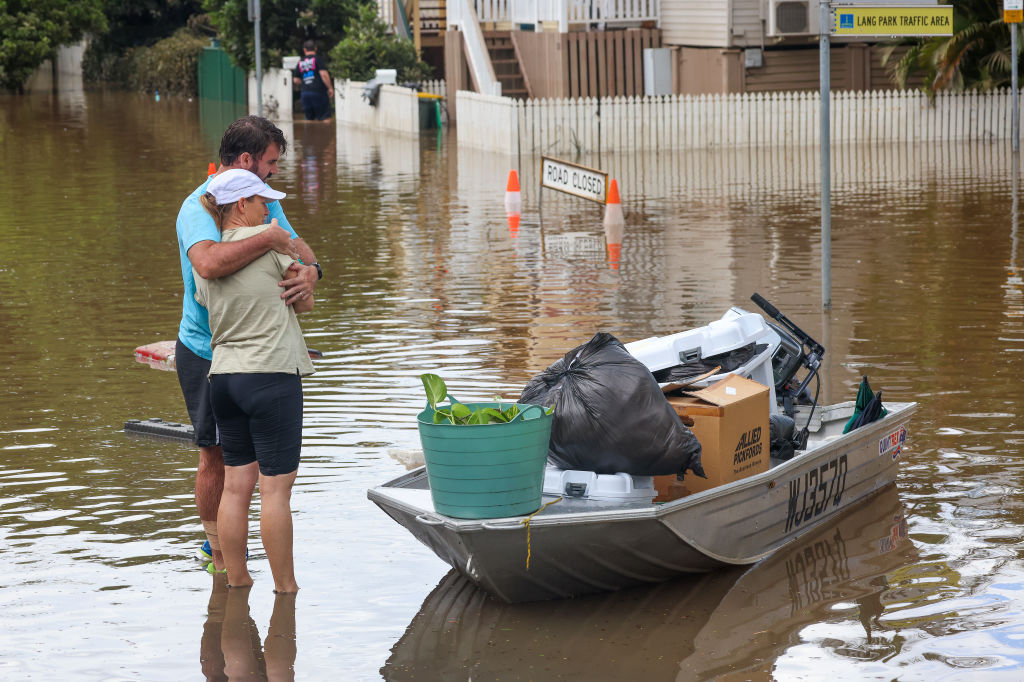Different thinking for a resilient Australia
Posted By Gill Savage on March 2, 2023 @ 06:00

Australians proudly display their resilience when they band together during a crisis and then stoically move on. In rural and remote communities, resilience is a required and highly prized commodity. However, the frequency and concurrency of national crises are ‘eroding our ability [1] to respond and fatiguing our emergency management response systems’. Four years of fires, Covid-19, supply-chain impacts and flooding have left us exhausted and overstretched, and yet we continue to be overly reliant on individual and community resilience.
Australia has experienced so many adverse events, affecting so many people, over such an intense period, that ‘resilience’ is now the word we often hear. It gets applied to everything from the state of our health system and building standards to educational programs and, of course, disaster preparedness and recovery. Its use in our discourse perhaps comes only second in frequency to ‘unprecedented’.
We expect Australians to be stoic, but at what cost? In 2021–22, a survey [2] found that 16.8% of Australians suffered from anxiety, which is an increase from 13% in 2017–18—a trend that is cause for concern. While there are many reasons for these results, the links with our national resilience shouldn’t be understated.
Governments at all levels are now focusing on ‘resilience’, but clarity about what is required at the grassroots level continues to elude them. Commonly this resilience focus is associated with disaster or crisis response. The problem with that is the inherent emphasis on reactively fixing a problem rather than creating an environment where the impact of crises—natural or otherwise—could be eliminated or significantly curtailed.
Despite active use of words such as ‘preparedness’ and ‘mitigation’, the focus on disaster response continues to be at the expense of regional pre-disaster prosperity, sustainability and resilience. One of the regions in which that effect is particularly pronounced is northern Australia.
We rely on the north for so much. The region has geostrategic importance for our national security, and through its natural resources it contributes disproportionately to Australia’s economy. However, the adverse impact of national challenges on the north is often more apparent given its fragile infrastructure and the boom-and-bust economic cycles and extreme seasonal climate variation.
The findings of the defence strategic review [3] are now with the government for consideration. We’ll soon know the implications for the north of the defence organisation’s meeting ‘the estate, infrastructure, disposition, logistics and security investments required to provide Australia with the Defence force posture required’ and meeting its ‘preparedness, and mobilisation needs’. The success of defence operations in the north is dependent on addressing key questions missing in the resilience conversation: what outcome is needed from a focus on resilience, and how will a resilience outcome will be achieved?
In the past, I’ve noted [4] that in the north, and any other remote region for that matter, its ‘not about spending more money; it’s about embracing modern nation-building through cross-jurisdictional and cross-sectoral collaboration that achieves more effective multi-use—and multi-user—outcomes’. I’ve also noted [5] that whole-of-community capability is needed in the north, which requires collaboration by governments, businesses and communities to establish sustainable capability.
One can’t help but wonder how the plethora of state, territory and federal ‘resilience’ entities, and those with ‘resilience’ hidden in their mandate statements, will achieve the level of collaborative change required. There’s no need to ponder too long, though. Hints to the answer lie in published government reports and updates that continue to focus on sectors (such as industry, health or agriculture) or segments of the population (adolescents or employees, for example).
Understanding the northern context [6] is key. While northern Australia comprises 53% of Australia’s land mass, it is home to 5.3% of the national population. It has a median age of 35–39 years, and 16% of northern Australia’s population is Indigenous compared to 2.6% nationally. It is home to seven world heritage sites, produces more than 94% of Australia’s bananas and 93% of Australia’s mangoes, and makes up 90% of Australia’s live cattle exports. These facts represent a different operating environment to that of southern Australia.
However, it’s also important to appreciate that one size won’t fit all. The needs of Darwin are different to those of remote areas of the Northern Territory, which are different to the needs of Cairns and Broome. Those operating at the local level appreciate this best, but they struggle to navigate the federated system of government and the supporting (and burgeoning) ‘resilience’ bureaucracies.
Resilience won’t be achieved if local communities continue to be required to compete with each other for one-off, sector-specific federal or state grants. Sustained investment is needed that taps into local strengths and supports nation-building opportunities.
There’s a need to disrupt the outdated thinking and divert governments off the well-worn but ineffective track.
To achieve Australia’s security outcomes, we need to drive economic and social prosperity in the north through a co-designed national framework that guides whole-of-region and whole-of-nation thinking, encourages regional operating models and fosters investment in robust, local physical and social infrastructure.
While pieces of this puzzle do exist, more effort is needed to complete the picture and ensure it is sustained.
Article printed from The Strategist: https://www.aspistrategist.org.au
URL to article: https://www.aspistrategist.org.au/different-thinking-for-a-resilient-australia/
URLs in this post:
[1] eroding our ability: https://www.aspistrategist.org.au/australia-is-struggling-under-the-cumulative-effects-of-continuous-and-concurrent-crises/
[2] survey: https://www.abs.gov.au/statistics/health/mental-health/national-study-mental-health-and-wellbeing/latest-releasehttps:/www.abs.gov.au/statistics/health/mental-health/national-study-mental-health-and-wellbeing/latest-release
[3] defence strategic review: https://www.defence.gov.au/about/reviews-inquiries/defence-strategic-review
[4] noted: https://www.aspistrategist.org.au/fragile-local-communities-are-a-security-risk/
[5] noted: https://www.aspistrategist.org.au/redesigning-supply-chains-to-meet-australias-needs/
[6] northern context: https://www.infrastructure.gov.au/territories-regions-cities/regional-australia/office-northern-australia
Click here to print.